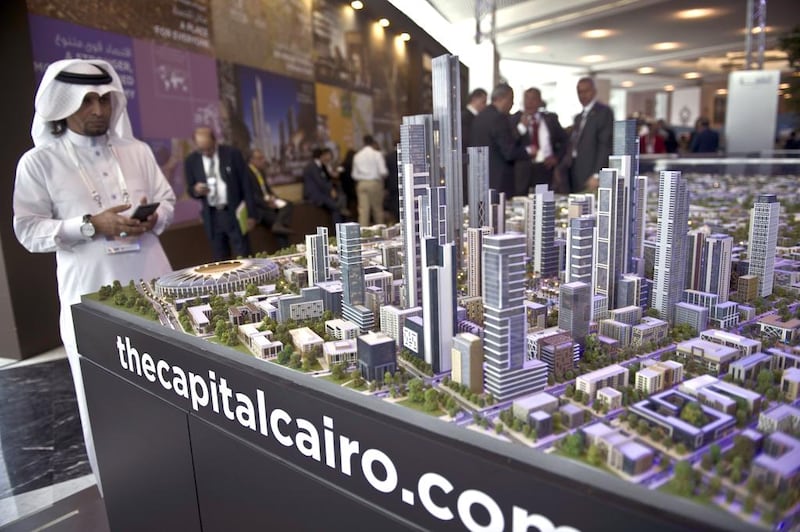While most external perceptions of the Mena region are dominated by concerns about geopolitical instability, there have been welcome developments in recent weeks in two of the largest countries of the region. And even in some of the smaller Mena countries activity has also continued to strengthen at the start of second quarter.
Over the past few weeks, hopes have been raised that Egypt and Iran could soon start to see a surge of foreign investment inflows, helping to spark an economic turnaround following several years of weak growth. For very different reasons, real GDP growth since 2011 has fallen significantly below its long-term trend, with Egypt expanding by an average of only 2.5 per cent over the past four years, compared to 4.9 per cent between 2000 and 2010, while Iran’s economy contracted 1.4 per cent between 2011 and 2014, against average growth of 5.4 per cent in the prior decade.
In the case of Egypt, the main cause behind the renewed optimism was the success of Egypt’s The Future Conference, which showed an unprecedented amount of international support for the economy’s recovery prospects. About US$6.5 billion in immediate financial assistance was pledged by several GCC states, which will bolster the central bank’s stock of foreign exchange reserves and help to alleviate pressures on Egypt’s still weak balance of payments position, at least in the short term.
More importantly, roughly $35bn in investment projects were announced over the course of the weekend conference in Sharm El Sheikh, with the majority allocated towards the energy and housing sectors.
The economy still has several large underlying vulnerabilities – including weak public finances, a large public debt load, and tepid job growth – however it seems as if the conditions are finally being laid down for a longer term and more sustainable economic recovery.
Although it has not garnered as much attention as the development conference, the government recently passed a revised unified investment promotion law, which seeks to streamline procedures (ie the creation of a ‘one-stop shop’ for project approvals) and offer greater protection for investors.
The improved outlook was further confirmed this month, when Moody’s raised Egypt’s government bond rating to B3 from Caa1, with the global ratings agency citing a stronger growth performance, a reduction in external vulnerabilities, and most importantly, a commitment to reform, as the reasons behind the upgrade.
In the case of Iran, in contrast, it was the conclusion of a nuclear programme framework agreement this month that has raised the potential for a long-awaited economic turnaround.
The agreement does not represent a conclusive deal, but rather a set of parameters that are meant to highlight the progress that has been made throughout the discussions that have been ongoing since 2013
Although there are still risks of this tentative agreement falling apart before the deadline, the implications of Iran’s gradual reintegration into the global economy are significant.
Estimates from the International Energy Agency suggest that the removal of sanctions could increase Iranian oil output by 800,000 barrels per day in as little as three months. Current production is 2.7 million bpd.
At this stage, the pace at which sanctions will be removed under a final agreement remains highly uncertain, even if a final deal is reached by July.
Nevertheless, for a market that has been starved of foreign investments over the past several years, and is now estimated to be 20 per cent smaller because of sanctions, even a gradual opening of the economy could have a large impact domestically.
Even for the smaller oil-importing economies across the region, the outlook has also continued to strengthen at the start of second quarter.
Recently released GDP data shows economic momentum accelerating, with headline growth in Jordan rising in the fourth quarter of 2014 to 3.3 per cent year on year – its fastest pace since 2011. The Moroccan economy expanded 4.4 per cent in the first quarter of this year, which was the strongest quarter in a year.
The ongoing decline in global commodity prices is having a particularly big impact on helping to narrow trade deficits, and should these trends continue for the remainder of the year, it would suggest a fundamental transformation of the region’s balance of payments position, and result in significantly lower external financing requirements.
Tim Fox is the head of research and chief economist at Emirates NBD
business@thenational.ae
Follow The National's Business section on Twitter






